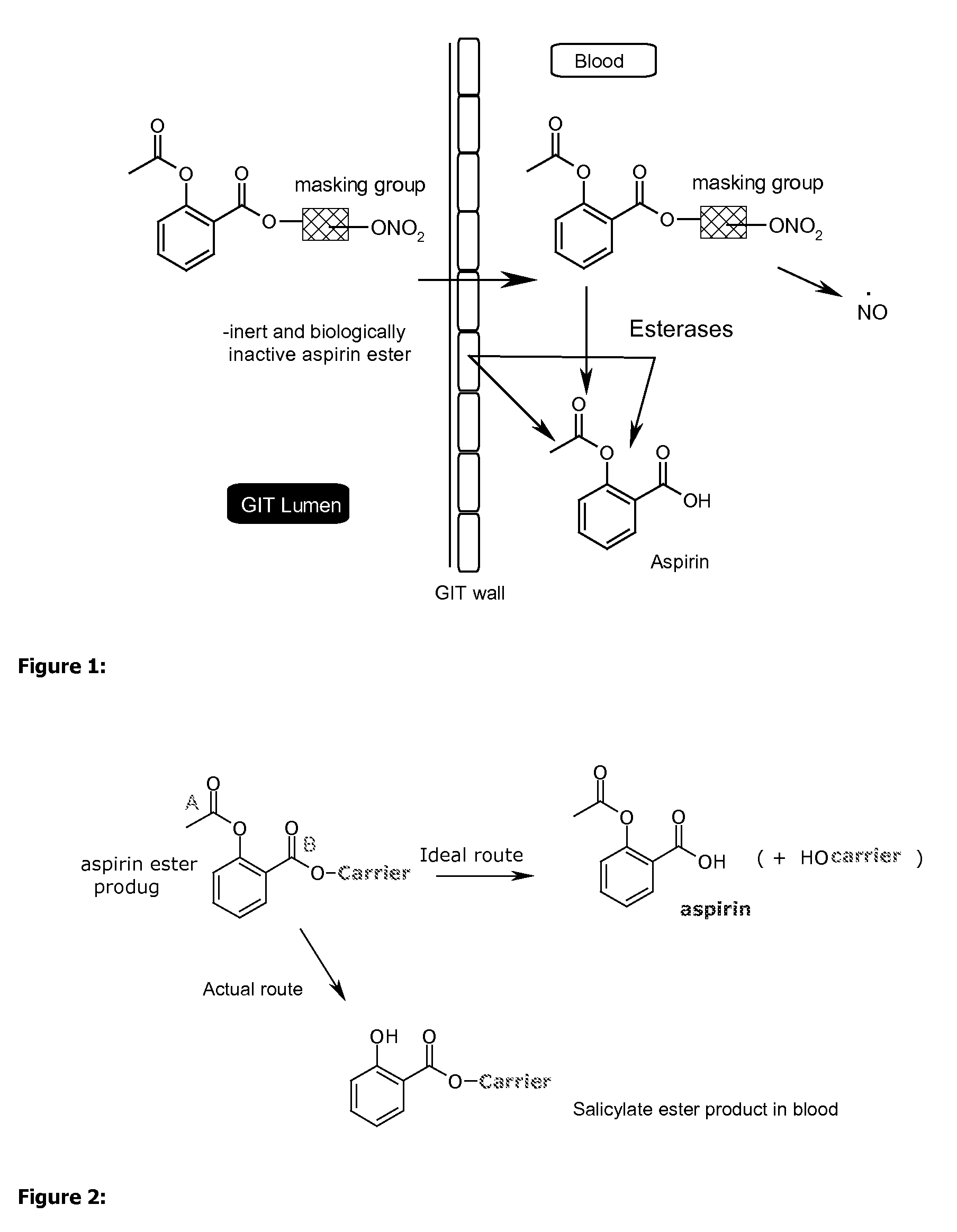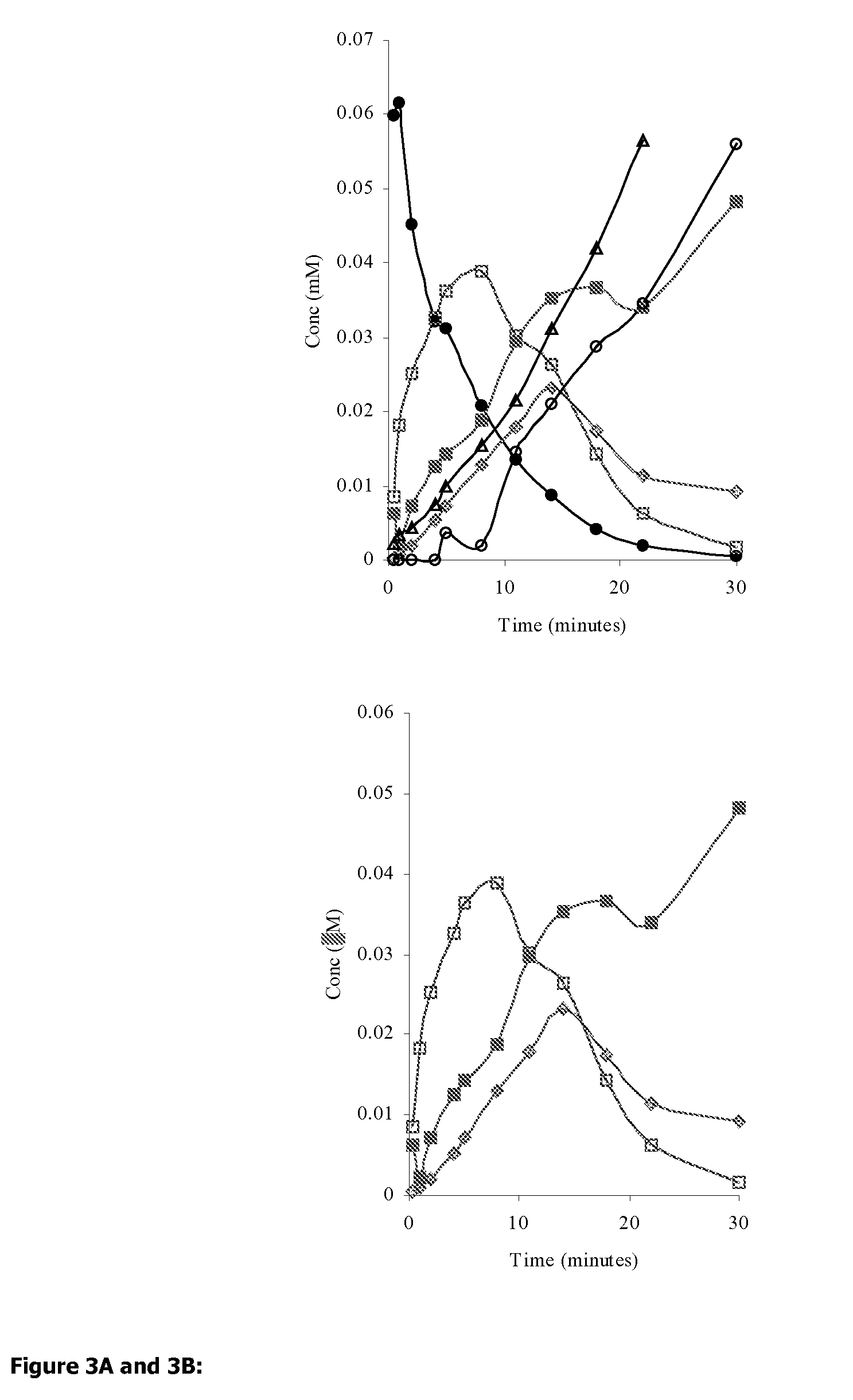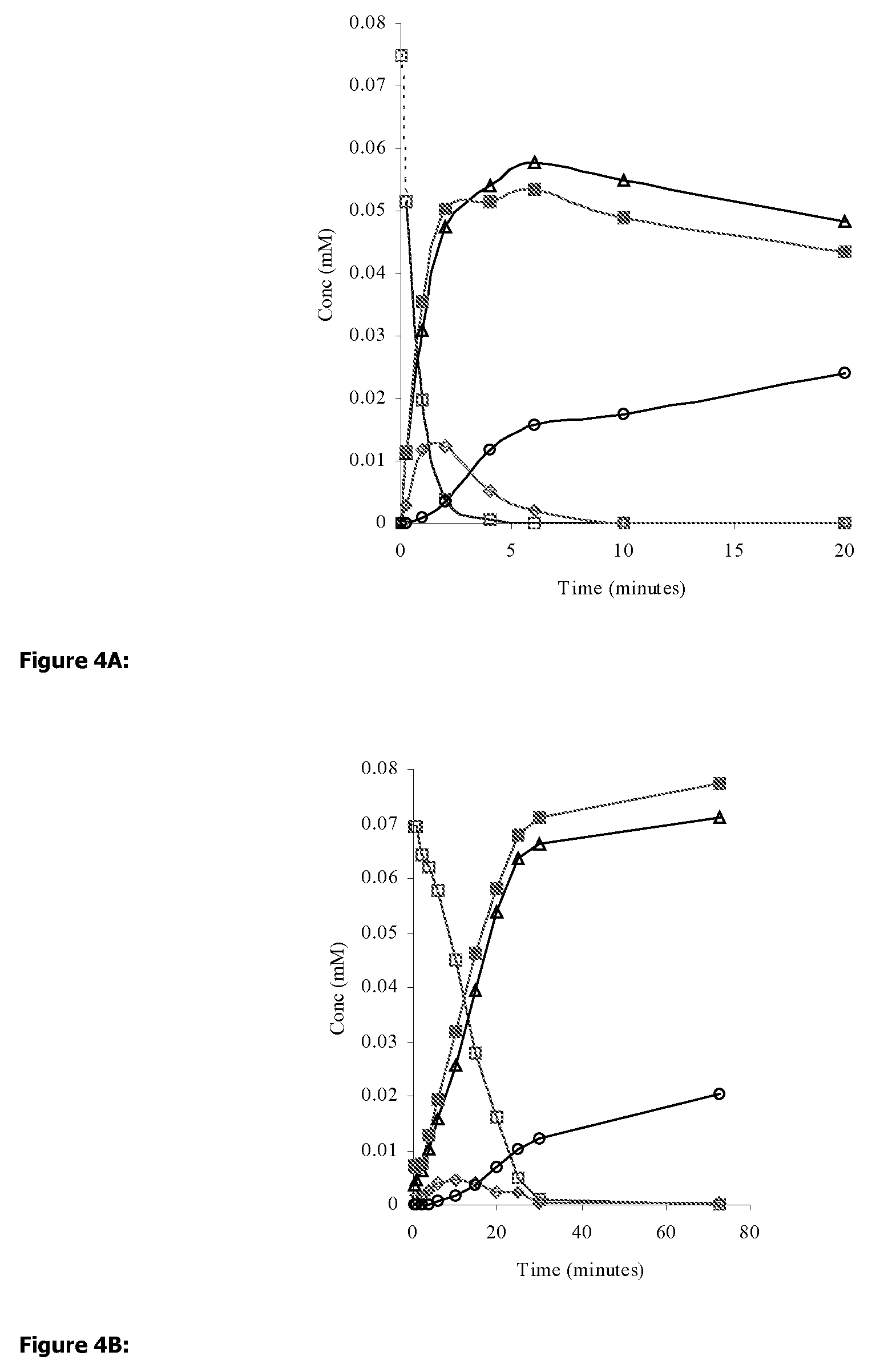Efficient aspirin prodrugs
a prodrug and efficient technology, applied in the direction of drug composition, biocide, extracellular fluid disorder, etc., can solve the problems of increased risk of bleeding at all aspirin doses, limited aspirin use to patient groups, and increased risk of serious gi injury, so as to prevent txa2 synthesis and enhance constitutive platelet glycoprotein expression
- Summary
- Abstract
- Description
- Claims
- Application Information
AI Technical Summary
Benefits of technology
Problems solved by technology
Method used
Image
Examples
experimental examples
Synthesis of Isosorbide-2-aspirinate-5-esters: Molecular Formulae Appear in FIG. 2
Isosorbide-2-aspirinate-5-[2-methylbenzoate] 1
[0217]To a solution of isosorbide-2-aspirinate 17 (0.2 g, 0.65 mmol) in dichloromethane (15 ml) was added triethylamine (0.11 ml, 0.98 mmol) and 2-toluoyl chloride (0.09 ml, 0.72 mmol). The reaction mixture was stirred at room temperature for 24 hours and then was washed with water (2×25 ml), HCl (1 m, 25 ml) and saturated aqueous NaHCO3 before drying over anhydrous MgSO4. Solvent was removed in vacuo to give 0.41 g of crude product as brown oil. Purification by column chromatography using hexane and ethyl acetate (2:1) as eluant gave product as yellow oil. This was recrystallised in ethanol to yield compound 1 as a white solid (0.11 g, 39.6%) m pt. 104-106° C. IRvmax (KBr): 2987.1 and 2922.8 (C—H stretching), 1762.0 and 1718.1 (C═O), 1259.5 and 1199.8 (C(O)OR aromatic), 1072.4 (C—O—C) cm−1. HRMS: Requires: 449.1212 (M++23), Found: 449.1238 (M++23), 1H NMR ...
PUM
| Property | Measurement | Unit |
|---|---|---|
| pH | aaaaa | aaaaa |
| temperature | aaaaa | aaaaa |
| temperature | aaaaa | aaaaa |
Abstract
Description
Claims
Application Information
 Login to View More
Login to View More - R&D
- Intellectual Property
- Life Sciences
- Materials
- Tech Scout
- Unparalleled Data Quality
- Higher Quality Content
- 60% Fewer Hallucinations
Browse by: Latest US Patents, China's latest patents, Technical Efficacy Thesaurus, Application Domain, Technology Topic, Popular Technical Reports.
© 2025 PatSnap. All rights reserved.Legal|Privacy policy|Modern Slavery Act Transparency Statement|Sitemap|About US| Contact US: help@patsnap.com



